SoCal Distancing #1: Suzuki Burgman 400 to St. Francis Dam
Disasters 'r Us
It’s important to keep things in perspective; the coronavirus isn’t the first disaster to befall us and you know it won’t be the last. Well, I mean it could be… Wherever you live, you can probably find all kinds of things that have gone spectacularly tits up over the years in your own backyard. The bigger the town, the bigger the pile of massive cock-ups, as the English like to say. It’s a good word. Especially now that there’s no traffic, and we have motorcycles, why not let’s go visit? Our deepest condolences to those of you living in places where you’re not allowed to ride.
2020 Suzuki Burgman 400
| Engine | 17.0/20 |
| Suspension/Handling | 13.5/15 |
| Transmission/Clutch | 9.5/10 |
| Brakes | 8.5/10 |
| Instruments/Controls | 4.5/5 |
| Ergonomics/Comfort | 9.0/10 |
| Appearance/Quality | 8.5/10 |
| Desirability | 8.5/10 |
| Value | 8.0/10 |
| Overall Score | 87/100 |
(California is under stay-at-home orders as of March 19, but one of the exceptions reads: “So long as you are maintaining a safe social distance of six feet from people who aren’t part of your household, it is OK to go outside for exercise, a walk or fresh air.” We rode to the dam before the 19th, and for some of us, riding is exercise.)
If you’ve seen Chinatown, you’ve already met William Mulholland in the character of Hollis Mulwray, the man who brought water to Los Angeles, which allowed it to become the home of some 58 billion people. Where he brought the water from, though, and the way he went about it, had a lot of residents from the Owens Valley area up north of LA, far from happy. Unhappy enough to dynamite the California Aqueduct closed now and then, which gave Mulholland the idea that a second large source of water for the growing metropolis would be a good idea. Thus, the St. Francis Dam in San Francisquito Canyon, 40 miles northwest of downtown LA.
I’m going to borrow most of my information from Wikipedia (I made a small donation) because I don’t have days to read the books and archives that Wiki draws upon, but they’re out there if you want to dive deep. Heck, the Wiki entry itself is thousands of words…
Water began to fill the St. Francis reservoir on March 12, 1926, and while the 185-feet tall dam had its share of leaks and cracks as the reservoir behind it filled, apparently it was nothing to worry about. “Of all the dams I have built and of all the dams I have ever seen, it was the driest dam of its size I ever saw,” William Mulholland would later say.
Two years later, on March 28, 1928, the dam keeper noticed a new, bigger leak that seemed to be gnawing at the foundation of the dam. He called Mr. Mulholland, who drove up with his assistant Harvey Van Norman, and inspected the dam for two hours before deciding the new leak was nothing serious, the dam was safe. The pair drove back to LA.
We decided to schedule our own two-hour inspection. We used to tear around Bouquet Canyon and Lake Hughes a lot when there was only a monthly print magazine and no internet mouth to feed, but I don’t recall ever riding San Francisquito Canyon. The plan was to go up Angeles Crest (CA Hwy 2) and take the scenic route westward, but no sooner had we headed up there on a Saturday morning (there were a lot of bikes and sportscars out), than the CHP was turning traffic around at the bottom of the Crest. Bad crash? We should’ve gone Friday like the original plan. Wait. Do weekends still exist?
But it barely mattered, because we had the 210 freeway to ourselves. Which was good, because I turned left instead of right on Sunland Boulevard and got lost and angry at my Google map for a while until I figured out somebody must’ve broken into my house overnight and turned off the cellular data. Once that was fixed, Google and my Cardo had us on our way.
I had a Kawasaki Z900RS and a BMW F900XR in the garage too, but we needed to try out the Burgman 400’s long-distance chops. We’d already decided for around town, it can’t be beat. As it turns out, I’m really glad we hopped on it. I already own a nice little Suzuki soft cooler, which gives us the cachet of owning matching luggage. It’s just large enough for a few cans/water bottles and some snacks, and it fit perfectly under the seat, along with the other stuff people travel with, no luggage or backpack required: Also, 5-feet-zero Chrissy Rogers fits perfectly on the cushy back seat, which is way easier to climb onto than the Z900 or the BMW, and more comfortable.
Even after two hours up the freeway and being lost, neither of us had any comfort complaints. Cruising at 80 or 85 mph on the Burgman, with its tachometer registering 8500 rpm of a possible 9000, nobody felt any vibration. Top speed for two – about a 350-pound payload – is 90 mph, according to the speedo, on level ground. Perfect for SoCal freeways. Any slower is too slow when the freeway is empty like it is now during this hopefully once-in-a-lifetime event; any faster you’re itching for trouble, mister.
There’s a 399 cc DOHC liquid-cooled engine sitting somewhere under the hood, and we’re told it’s derived from the long-running and rock-solid DR-Z400. The Burgie actually does sound a bit dirt-bikey coarse at first even if it never feels that way, but then you get used to it and enjoy brawwhping it around just like you would a DR-Z. It seems to enjoy the abuse, and Suzuki says its 5-liter airbox is tuned to sound “exciting.”
2018 Suzuki Burgman First Ride Review
When they redesigned the scooter for 2018, it got bigger wheels (120/70-15 and 150/70-13), a stiffer frame and a bunch of other upgrades. Throw in a 41mm fork, link-type shock out back, triple disc brakes (with standard ABS) and you’ve got a pretty sweet-handling package – and not just for a scooter. Closer inspection reveals the cylinder head is right below the rider’s part of the seat, with the preload-adjustable rear shock parallel to the ground amidships. Seems like pretty good “mass centralization” but also retaining the typical excellent scooter low center of gravity.
With 350 pounds of flesh and gear aboard, bump absorption and the ride seem right in the ballpark – and I didn’t bother to crank the rear preload up from the standard #3 of its 7 positions. In fact the rear feels just right with passenger and loaded trunk. Without the passenger, I think you could ride the Burgie really quick in the curves. With a passenger, you can still ride pretty quick. You can also just cruise along since the CVT auto trans does all the shifting. Do any scooters have cruise control?
The only thing we both complained about was buffeting about the helmets at speeds above about 60 mph, but I could still listen to talk radio and hear Cardo directions inside my Shoei, with foam earplugs in. The aftermarket serves up all kinds of windshields and extensions to fix that turbulence.
Where were we? O yeah, March 12, 1928, and another guy riding a motorcycle (history does not tell us the brand) up San Francisquito Cyn road after his shift had ended at Powerhouse Number 1 below the dam – just about 92 years ago, just before midnight:
“There were no surviving eyewitnesses to the collapse, but at least five people passed the dam within the hour prior without noticing anything unusual. The last, Ace Hopewell, a carpenter at Powerhouse No. 1, rode his motorcycle past the dam about ten minutes before midnight. He testified at the Coroner’s Inquest that he had passed Powerhouse No. 2 without seeing anything there or at the dam that caused him concern. He went on to state that at approximately one and one-half miles upstream he heard above the roar of his motorcycle a rumbling much like the sound of “rocks rolling on the hill.” He stopped and got off, leaving the engine idling, and smoked a cigarette while checking the hillside above him. The rumble that had caught his attention earlier had begun to fade behind him. Assuming that it might have been a landslide, as these were common in the area, and satisfied that he was in no danger, he continued on.”
The rumbling Ace had heard was the “sudden and complete” collapse of the main dam at 2.5 minutes before midnight (along with the fluttering of his guardian angel’s wings), which we know precisely because that’s the time the power went off downstream, and the time the water level plunged on the dam’s recording device.
“The main dam, from west of the center section to the wing wall abutment atop the hillside, broke into several large pieces, and numerous smaller pieces. All of these were washed downstream as 12.4 billion gallons (47 million m³) of water began surging down San Francisquito Canyon. The largest piece, weighing approximately 10,000 tons (9,000 metric tons) was found about three-quarters of a mile (1.2 km) below the dam site.”
This, then, was a plumbing problem on the grandest scale.
On its way to the Pacific down the Santa Clara River, that massive wall of dirty water swept away the little California towns of Piru, Fillmore, Santa Paula, Saticoy and much of Ventura.
More Wikipedia: “The exact number of victims remains unknown. The official death toll in August 1928 was 385, but the remains of victims continued to be discovered every few years until the mid-1950s. Many victims were swept out to sea when the flood reached the Pacific Ocean and were never recovered, while others were washed ashore, some as far south as the Mexican border. The remains of one victim were found deep underground near Newhall in 1992, and other bodies, believed to be victims of the disaster, were found in the late 1970s and 1994. The death toll is currently estimated to be at least 431.” This was the second-greatest loss of life in California history, surpassed only by the great 1906 earthquake in San Francisco.
“In May 1929, the upright section was toppled with dynamite, and the remaining blocks were demolished with bulldozers and jackhammers to discourage the sightseers and souvenir hunters from exploring the ruins. The wing dike was used by Los Angeles firemen to gain experience in using explosives on building structures. The St. Francis Dam was not rebuilt, though Bouquet Reservoir in nearby Bouquet Canyon was built in 1934 as a replacement.”
What was left in the wake of the giant flood was the cleaning up and assigning of blame. William Mulholland had started out as a ditch tender for the Los Angeles City Water Company in 1878, who studied mathematics, hydraulics and geography after work, and taught himself engineering and geology. By 1911, he was Superintendent and Chief Engineer of the Bureau of Water Works and Supply, by which time he’d already designed and nearly completed the Los Angeles Aqueduct, the longest in the world at the time, still in use, and the thing that makes Southern California possible.
He took complete blame for the disaster. “During the Inquest Mulholland said, ‘This inquest is a very painful thing for me to have to attend but it is the occasion of it that is painful. The only ones I envy about this thing are the ones who are dead.’ In subsequent testimony, after answering a question he added, ‘Whether it is good or bad, don’t blame anyone else, you just fasten it on me. If there was an error in human judgment, I was the human, I won’t try to fasten it on anyone else.’”
Wiki: “The Coroner’s Inquest jury determined that one of the causative factors for the disaster lay in what they had termed as ‘an error in engineering judgment in determining the foundation at the St. Francis Dam site and deciding on the best type of dam to build there’ and that ‘the responsibility for the error in engineering judgment rests upon the Bureau of Water Works and Supply, and the Chief Engineer thereof.’ They cleared Mulholland as well as others of the Bureau of Water Works and Supply of any criminal culpability, since neither he nor anyone else at the time could have known of the instability of the rock formations on which the dam was built. The hearings also recommended that ‘the construction and operation of a great dam should never be left to the sole judgment of one man, no matter how eminent.’”
Amen. In the grand scheme of things, 450 people aren’t all that many, unless you happen to be one of them. As I write this on the morning of 7 April, the Golden State’s suffered 387 deaths attributed to coronavirus.
Cheer up, though. The St. Francis Dam disaster also passed, things got back to normal, and the 1920s continued to roar. Right up until a year later anyway: On October 29, 1929, the stock market collapsed and ushered in The Great Depression. No telling how many people that killed, but even it wasn’t all bad, since it got us the Hoover Dam and Las Vegas, a million Hitler documentaries, the M1 Garand rifle… The Hoover Dam is still standing, and it’s a great time to visit the outside of it; the inside of it is closed. Anyway it just goes to show you: It’s always something.
Heck man, I’d ride the Burgie there if I had a different windscreen. Probably take the back way, though, since there’s no hurry lately. We decided this biggish little scooter (474 pounds wet is the claim) is kind of a poor person’s mini-Goldwing. We put 220 miles on it that day going to visit St. Francis, burning just about four gallons of gas – 55 mpg – and felt perfectly fine at the end of the day. It’s super nice for getting out of the house, while staying far away from the herd.
God bless us, one and all.
2020 Suzuki Burgman 400
+ Highs
- More convenient mini-Goldwing
- Goldilocks-sized
- There’s a DR-Z400 in there
– Sighs
- Helmet locks would be nice
- Cruise control would be nice, but…
- Blustery windscreen is easily dealt with
In Gear

Helmet: Shoei Neotec 2 Splicer $799
- Jacket: Aerostich Falstaff $667
- Pants: Trilobite Parado Elastic Men’s Jeans $219
- Gloves: Dainese Quanto 4-Stroke Evo $220
Boots: Sidi Arcadia Tex $179
2020 Suzuki Burgman 400 Specifications | |
|---|---|
| MSRP | $8,299 |
| Engine | 399cc, 4-stroke, liquid-cooled, single-cylinder, DOHC |
| Bore x Stroke | 81.0 mm x 77.6 mm |
| Compression Ratio | 10.6:1 |
| Fuel System | Fuel injection |
| Starter | Electric |
| Lubrication | Wet sump |
| Transmission | CVT (automatic, centrifugal clutch) |
| Final Drive | V-belt drive |
| Front Suspension | Telescopic, coil spring, oil damped |
| Rear Suspension | Link type, single shock, coil spring, oil damped |
| Front Brakes | Disc brake, twin 260 mm, ABS-equipped |
| Rear Brakes | Disc brake, single 210 mm, ABS-equipped |
| Front Tires | 120/70-15M/C (56S), tubeless |
| Rear Tires | 150/70-13M/C (64S), tubeless |
| Fuel Capacity | 3.6 gallons |
| Ignition | Electronic ignition (transistorized) |
| Spark Plug | NGK CR7EIA-9 or DENSO IU22D |
| Headlight | Dual LED (high and low beam, plus position lights) |
| Tail Light | LED |
| Overall Length | 88.0 inches |
| Overall Width | 30.1 inches |
| Overall Width | 53.1 inches |
| Wheelbase | 62.2 inches |
| Ground Clearance | 4.9 inches |
| Seat Height | 29.7 inches |
| Curb Weight | 474 pounds (claimed) |
| Warranty | 12 month unlimited mileage limited warranty Longer coverage periods with other benefits available through Suzuki Extended Protection (SEP). |
| Color | Metallic Matte Black No. 2 |
More by John Burns
















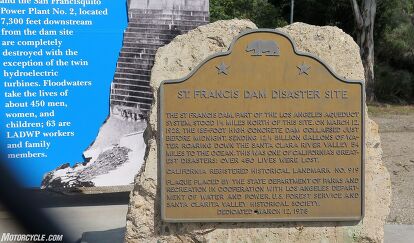














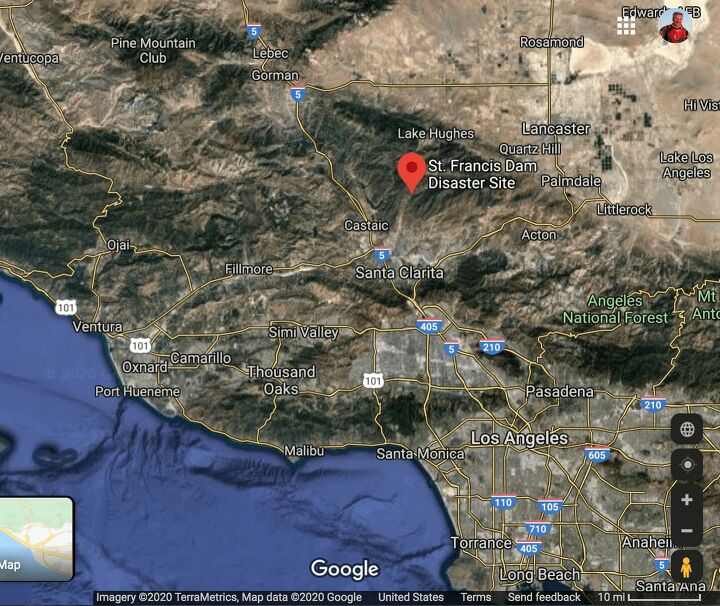











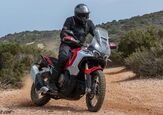












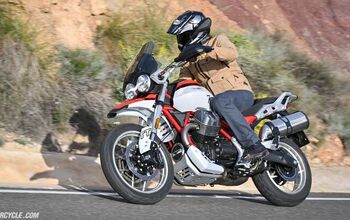


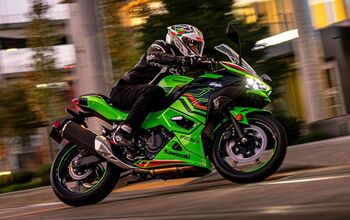


Comments
Join the conversation
John:
Fine writing (as usual).
In answer to your question: yes, the Tech Max variant of Yamaha's current TMax, and the DX variant of the prior generation of the TMax, come with cruise control. This is NOT the case with any Beemer scooter, nor any Burgie, nor ...
Instead, if you really want cruise control, you can add an MC Cruise (very expensive) to at least some of those, or try to do a DIY fabrication to add a Rostra cruise control, or an Audiovox. I went the MC Cruise route with my '07 650 Big Burger, but have relegated my '08 650 (purchased in '16) to throttle-lock duty, because an MC Cruise now costs more than that bike is worth.
(BTW, I had a big ol' Victory Cross Country Tour for five years in between those. That had factory cruise, so if any BMW honcho tells you -- as one did to me, at the NYC cycle show, when the Beemer scooter was introduced -- that cruise control is not possible with throttle-by-cables, feel free to cite the Victory line.)
Back to the TMax. Despite my periodic email and snail-mail entreaties to YammyUSA, however, neither the current nor the immediately prior iteration of any TMax version has been available for sale in North America (i.e., it's been quite a while now, since any TMax was sold here). Not having the only scooter with factory cruise available in the wide expanses of North America just strikes me as dumb. This is where you really need cruise, because it's often a long ride to get to the good twisties. Oh, well.
WHats new for 2021 ?